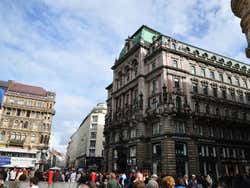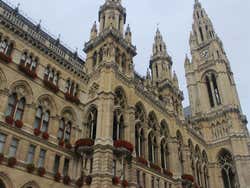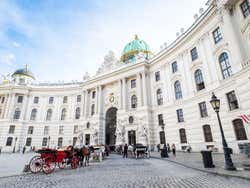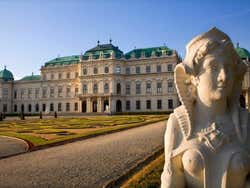
History of Vienna
Kings and queens, great empires, world-renowned culture...discover the history of the vibrant European city of Austria from its beginnings thousands of years ago, to its establishment as the capital of the Republic of Austria.
The first settlers of the area, 5th century B.C., were the Celts. In the first century B.C., the Romans incorporated it into their empire giving it the name of Vindobona or the "white city".
To defend the region, the Romans built a fortress, called "Pannonia". Vespasian chose it as the seat of Legion XIII and, in the time of Caracalla, in 213 Vindobona became a municipality. Emperor Marcus Aurelius died there.
Located along the Danube, the northern natural boundary of the empire, this area witnessed continuous struggles with the Germanic peoples. Peace only arrived in the 5th century when it fell into the hands of the Avars.
At the end of the 8th century, Pannonia was conquered by Charlemagne, who added it to his empire, calling it the "Mark of the East", which is considered the birth of Austria. It was not until 996 that it began to be called Austria.
The Babenberg Dynasty
Its strategic location on the Danube route, between the strong economies of Venice and Germania, attracted the attention of the powerful Babenberg family. They successfully persuaded Otto II to grant them the Duchy of the Mark. The first duke, Leopold I the Illustrious, ensured that Vienna remained independent from the Hungarians.
Vienna played an important role in the Crusader wars. In 881 the name Vienna appears for the first time.
In 1156 Frederick I Barbarossa made the Duchy hereditary within the Holy Roman Empire. Duke Henry II Jasomirgott moved the capital from Pochlarn to Vienna. With the capital Vienna began a period of strong economic growth and became the center of the salt, copper and silver trade between Italy and the East.
In 1237 Vienna was declared an imperial city. In 1246 Frederick II the Warlike received Austria as a hereditary kingdom from the Emperor.
The House of Austria: The Habsburgs
When Frederick II the Warlike died without descendants in a battle against the Hungarians, the Babenberg family lineage ended. Ottokar II, King of Bohemia, and Rudolf I of Habsburg contested the Austrian throne, with the Habsburgs prevailing. This marked the beginning of the Habsburg dynasty, which lasted from 1278 to 1918 and became one of the most powerful in European history.
For two centuries, Austria served as the bulwark of Christianity against the Ottoman Empire. It was attacked by the Turks twice, first in 1529 and again in 1683 by the grand vizier Kara Mustafa. To commemorate the victory over the second Turkish siege, the Pummerin, the famous bell of Vienna's St. Stephen's Cathedral, was cast from the cannons abandoned by the fleeing Turks.
The struggles against the Turks weakened Austria's power within the Holy Roman Empire and began a decline that was to continue with the Wars of Religion and the Thirty Years' War.
During the rule of Emperors Leopold I and Charles VI, Vienna experienced a significant boom, as the city became a cultural hub. Baroque architecture flourished, and music conquered the city, marking a golden era in Vienna's history.
Upon the death of Charles VI, despite the Pragmatic Sanction allowing female members of the dynasty to ascend to the throne, the War of Austrian Succession ensued. After the conflict, his daughter, the emblematic Empress Maria Theresa of Austria, came to power.
Maria Theresa and Joseph II
The two reigns, examples of European enlightened despotism, brought about great social and political changes and marked the personality of the Viennese for a long time.
Maria Theresa, an empress of strong character who ruled for forty years, is rightly considered one of history's great female figures. Married to Francis of Lorraine, she showcased her courage and political acumen by reorganizing her empire and implementing significant administrative reforms. She streamlined the central government, reduced the power of the states, introduced the cadastre to increase tax revenue, imposed conscription, and organized the army. In religious matters, she unfortunately persecuted Jews and Protestants.
Joseph II, the prototype of the enlightened despot, succeeded his mother, Maria Theresa. His comprehensive reforms included abolishing peasant serfdom, which led to uprisings, and forbidding the exodus of previously persecuted Protestants.
He promoted social equality, civil marriage, and softened legal penalties. Joseph II imposed German as the official language, curtailed papal power in his empire, established freedom of worship, and suppressed numerous religious orders. In 1773, he expelled the Jesuits, who had been in Vienna since 1551 to counter Lutheranism. His harsh measures resulted in widespread discontent; the Netherlands gained independence, the Hungarians threatened revolt, and he ended his ten-year rule by reversing many of his reforms.
Austrian Empire 1806-1867
In 1805 the French defeated the troops of Emperor Franz II at the battles of Austerlitz and Pressburg and forced him to renounce the throne of the Holy Roman Empire. This event gave rise to the birth of the Austrian Empire.
In 1809 the Napoleonic troops occupied Vienna, after defeating the Austrians again in the battle of Wagram.
In 1813 Napoleon was defeated and the victorious powers convened the all-important Congress of Vienna in 1815. Austria, thanks to the great Metternich, played a fundamental role in the restoration of the pre-Napoleonic order and managed to maintain great power in Europe.
Vienna was one of the cities most involved in the Revolution of 1848. After the revolution was crushed by the Empire's troops, Franz Joseph I was named the new emperor (who married the mourned Empress Sisi). His empire, which lasted until 1916, was marked by the maintenance of imperial values.
Austrian and Austro-Hungarian Empires
In 1867 the Austro-Hungarian Empire was born. The kingdoms of Austria and Hungary agreed on their equality in the famous "Compromise of 1867" and Vienna became the capital of the new Empire.
After the Compromise, Vienna remained the cultural center of Europe and the political capital of an empire that did not stop expanding its territory until the advent of World War I. By 1916 it had more than two thousand inhabitants. In 1916 it already had more than two million inhabitants.
In 1873 Vienna was the site of the World Exhibition and the Opera House was built to commemorate it.
Vienna, capital of the Republic of Austria
After World War I, Austria was left devastated and its territories were divided. In 1919, the Republic of Austria was established with its current territory, and Vienna became the capital of a much smaller state
Suffering huge amounts of destruction from heavy bombing by the Allied Forces during World War II, Vienna was liberated by Soviet troops in 1945.
It was then divided into occupation zones and controlled by different Allied powers until its independence in 1955.
Its acknowledged neutrality has helped Vienna to become the seat of numerous international conferences and UN bodies. Today it is a city that lives from congresses, international venues and tourism.



